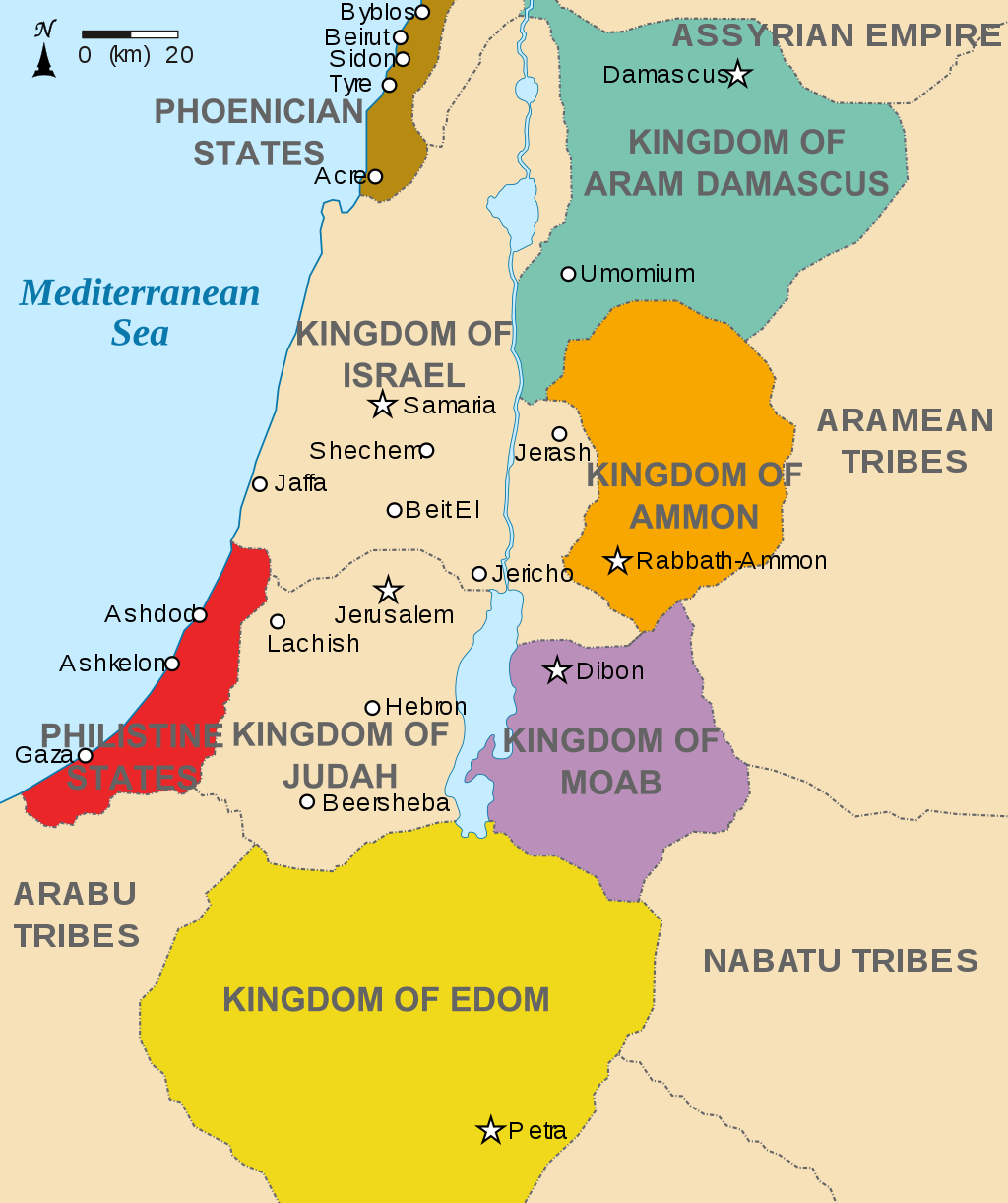Who and what is…
Moab
Hebrew: מוֹאָב —transliteration: Moab —meaning: the seed of the father, or, according to others, the desirable land
This is the name of a biblical man, a land and its people.
-
Moab, the oldest son of Lot
Mother: Lot’s oldest daughter (Genesis 19:37)
His brother was Ammon (aka Ben-ammi) (Genesis 19:38), the father of the Ammonites who land was the Kingdom of Ammon (see map below).
-
Moab, the people
These are the descendants of the man Moab (above). They are also called Moabites.
Numbers 22:3-14; Judges 3:30; 2 Samuel 8:2; Jeremiah 48:11; 48:13
-
The land of Moab
(Jeremiah 48:24; Ruth 2:6)
This is also called the “country of Moab” (Ruth 1:2 KJV; Ruth 1:6 KJV).
It was located on the east of the Jordan River and on the Dead Sea, and south of the Arnon River (Numbers 21:13; 21:26)
Map showing the general area of the ancient Kingdom of Moab in the 9th century BCDerivative work of Richardprins. License: CC BY-SA 3.0In a wider sense, Moab included the whole region that had been occupied by the Amorites.
In the Plains of Moab, opposite Jericho (Numbers 22:1; 26:63; Joshua 13:32), the children of Israel had their last encampment before they entered the land of Canaan. It was at that time in the possession of the Amorites (Numbers 21:22). “Moses went up from the plains of Moab unto the mountain of Nebo, to the top of Pisgah,” and “died there in the land of Moab, according to the word of the Lord” (Deuteronomy 34:5-6).
“Surely if we had nothing else to interest us in the land of Moab, the fact that it was from the top of Pisgah, its noblest height, this mightiest of the prophets looked out with eye undimmed upon the Promised Land; that it was here on Nebo, its loftiest mountain, that he died his solitary death; that it was here, in the valley over against Beth-peor, he found his mysterious sepulchre, we have enough to enshrine the memory in our hearts.”
More information
- Moabite
- Moabite Stone
- Lot
- Abarim
- Abel-shittim
- Amalekite
- Ammonite
- Anakim
- Ar (capital city)
- Arnon river
- Baal-peor (god of Moab)
- Bajith
- Balaam
- Balak (king of Moab)
- Bamoth
- Beer
- Berachah
- Beth-diblathaim (city of Moab)
- Beth-gamul (Moabite city
- Beth-jeshimoth (town of Moab)
- Beth-peor
- Bozrah (city of Moab)
- Burials of Miriam and Moses
- Chemosh (god of Moab) (also see: Moloch)
- Citizenship
- Corner
- Deuteronomy
- Diblathaim (city of Moab)
- Dibon (city of Moab)
- Eglon
- Ehud
- Elimelech
- Emims
- Book of Ezekiel
- Hanun (king of Moab)
- Heshbon (city)
- Horonaim (city of Moab)
- Ije-abarim
- Jahaz (town)
- Kerioth (city of Moab)
- Kir-haraseth (city of Moab)
- Kirjath-huzoth (city of Moab
- Kirjathaim (city)
- Kir of Moab
- League
- Lime
- Luhith
- Madmen (town of Moab)
- Medeba (Moabite town)
- Mesha (king of Moab)
- Misgab (town of Moab)
- Mizpah (town of Moab)
- Moses
- Naomi
- Mt. Nebo
- Waters of Nimrim (stream of Moab)
- Nophah (city of Moab)
- Book of Numbers
- Omri
- Orpah (Moabitess)
- Pahath-moab (governor of Moab)
- Peor (god of Moab)
- Pisgah
- Rephaim
- Ruth (Moabitess)
- The Book of Ruth
- Shaharaim
- Shalman
- Shaveh-Kiriathaim
- Shimrith (Moabitess)
- Shittim
- Shomer (Moabitess)
- Sibmah (town)
- Wilderness
- Zippor
- Field of Zophim
